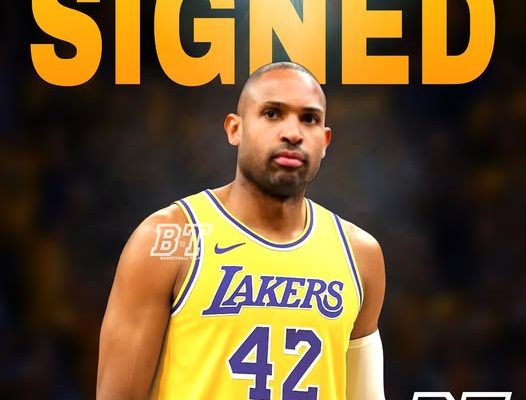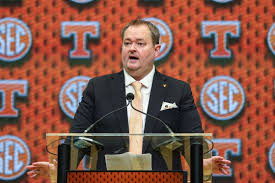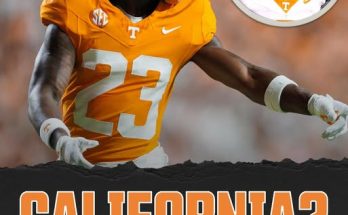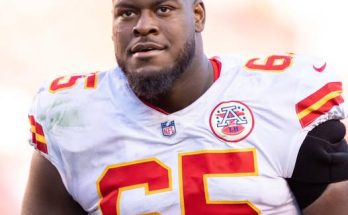When news broke that Al Horford had agreed to a one-year deal with the Los Angeles Lakers, the basketball world paused, if only for a moment. It wasn’t a blockbuster signing in the traditional sense — not the kind of move that causes social media servers to tremble or fans to flock to their nearest sporting goods store for a new jersey. But in many ways, it was even more profound. For a franchise that has long prided itself on a balance of star power, championship pedigree, and locker room leadership, Horford’s arrival feels like a calculated step toward something much bigger than meets the eye.
At 38 years old, Horford isn’t the player who used to put up nightly double-doubles or anchor entire defensive schemes for the Atlanta Hawks or Boston Celtics. But what he is now may be exactly what the Lakers need: an aging but reliable veteran with an exceptionally high basketball IQ, unmatched professionalism, and the kind of postseason savvy that can tilt the margins in a high-stakes playoff series. This is a man who has seen nearly every defensive coverage, been a part of both rebuilds and title chases, and who commands the respect of every locker room he’s ever entered.
For the Lakers, the move signals a continuing evolution in their approach to roster construction. After years of prioritizing athleticism and youth — sometimes with frustratingly inconsistent results — the front office, led by Rob Pelinka, seems to be leaning into the timeless value of experience. The team already boasts LeBron James, who enters his 22nd season defying logic and time, and Anthony Davis, who when healthy is one of the best two-way big men in the game. Adding Horford to that mix gives Los Angeles a unique trio of frontcourt options, each with vastly different strengths but shared basketball instincts.
The signing also comes amid a broader reshaping of the Western Conference. With the Denver Nuggets remaining dangerous, the Minnesota Timberwolves surging with young talent, the Phoenix Suns desperately trying to put their superteam puzzle together, and the Golden State Warriors adjusting to their own version of aging-out dynamics, the Lakers know they must thread the needle — being competitive today while still planning for tomorrow. Horford, on a one-year deal, is the very definition of low-risk, high-reward. His contract won’t hamstring the cap sheet, and his presence allows the Lakers to get more creative in their rotations.
On the court, Horford can still bring value in key areas. While his minutes will likely be carefully managed, his ability to stretch the floor with consistent outside shooting makes him a perfect complement to both Davis and LeBron. He’s shot over 42% from beyond the arc in each of the last two seasons, often in high-leverage situations. That kind of floor-spacing from a center or power forward spot is invaluable, especially in the modern NBA where paint congestion can derail even the most well-crafted offensive possessions.
Defensively, while he may not be as mobile as he once was, Horford’s positional awareness remains elite. He understands when to drop, when to switch, when to hedge. His mere presence helps younger players stay organized. He communicates constantly. He doesn’t chase highlight blocks, but he contests shots in ways that disrupt rhythm and timing. His defensive plus/minus metrics from last season still place him among the more effective bigs in the league, particularly in half-court sets.
Equally important is Horford’s impact off the floor. Few veterans are as universally praised for their mentorship, consistency, and quiet leadership. In Boston, he was often the glue that held together volatile rosters. Jaylen Brown and Jayson Tatum have repeatedly credited him with helping them navigate the pressure of expectations, losses, and internal team dynamics. With the Lakers now ushering in a new crop of developing talent — from Dalton Knecht to Maxwell Lewis to Jalen Hood-Schifino — having a figure like Horford around could prove invaluable. He doesn’t demand attention, but he commands respect.
Then there’s the LeBron factor. James has long spoken about his admiration for players who “get it” — those who understand how to prepare, how to endure, how to elevate others without chasing individual numbers. Horford fits that mold perfectly. In fact, their basketball paths, while never aligning on the same team until now, have often mirrored each other in their professional maturity. James needs teammates who can think the game at his level. Horford is one of the few remaining big men who can do just that.
Of course, the move does come with questions. What role will Horford play in Darvin Ham’s rotation? Will he start in spot games when Davis rests? Will he take the minimum or play backup five in small-ball lineups? Can his body hold up through another deep postseason run? All of these are fair to ask. But that’s the thing about signing a player like Horford — the value doesn’t always show up in the box score. His presence is felt in smoother offensive possessions, in settled defensive rotations, in younger players making smarter choices because of his influence.
From a strategic standpoint, Horford also gives the Lakers added flexibility. Should Davis miss time, Horford provides a veteran stopgap. If the team wants to go big against opponents like the Nuggets or Timberwolves, he allows them to maintain size without sacrificing too much shooting or IQ. If matchups require a smaller, quicker lineup, he can sit without making a fuss. That kind of adaptability is rare — and perhaps even more rare on a team with championship aspirations.
The Lakers have also been active on the trade and free agent fronts this offseason, making moves to shore up depth, add more shooting, and balance the roster across multiple positions. The arrival of Marcus Smart, another battle-tested veteran with a defensive edge, shows a clear philosophical commitment: bring in players who know how to win, who won’t shrink in playoff moments, and who can stabilize a roster that often leaned too heavily on the heroics of LeBron and AD.
Together, Smart and Horford — former Celtics teammates — could represent the kind of culture-changing core that pushes the Lakers past the inconsistencies of the last few seasons. And while Horford’s best days may be behind him, the Lakers aren’t asking him to be a star. They’re asking him to be solid. Dependable. Mature. Tough. These are traits that win games in April, May, and June.
There’s also a layer of narrative beauty to all this. Horford, who spent most of his career as part of Celtics lore, now dons the purple and gold. It’s not betrayal — it’s evolution. And in today’s league, where legacies are increasingly judged by adaptability and longevity, Horford joining the Lakers could cement his place as one of the most respected veterans of the era. He’s the kind of player you root for no matter what jersey he wears — but seeing him chase a title alongside LeBron and Davis feels like basketball poetry.
For Lakers fans, this isn’t just about nostalgia or sentimentality. It’s about chasing Banner No. 18 — the one that would break the tie with the Celtics once and for all. Bringing in a Celtic great to help get it done? That’s the kind of irony Hollywood dreams are made of. And in Los Angeles, dreams and championships go hand in hand.
Time will tell what kind of impact Horford will have on this Lakers squad. Maybe he hits a clutch three in a pivotal Game 5. Maybe he mentors a young player into becoming the next breakout contributor. Maybe he simply sits at the end of the bench and claps loudly. Whatever the outcome, the message is clear: the Lakers are all-in on building a roster that thinks like champions, acts like professionals, and plays with the kind of wisdom you can’t teach — only earn.
So while the headlines will move on to flashier moves and louder personalities, remember this one. Al Horford to the Lakers might not be the move that makes you scream. But it might just be the one that makes a difference.



